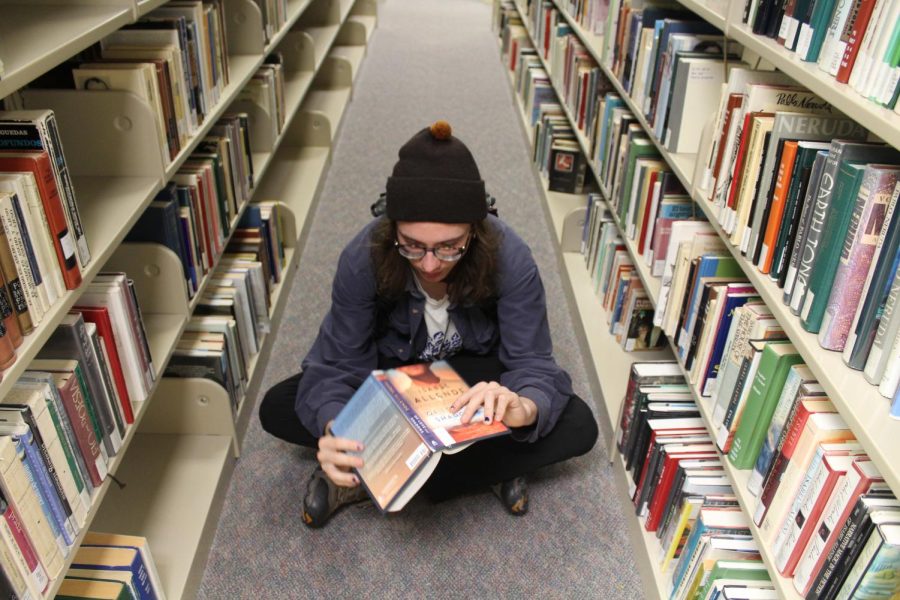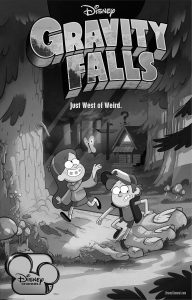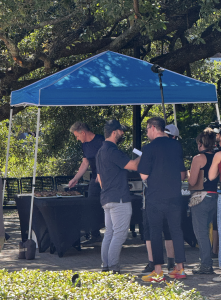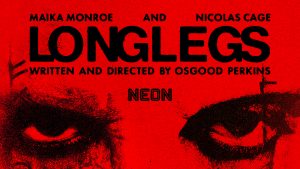OPINION: BookTok has shown us our generational anxiety
Photo Illustration
April 5, 2023
We’re not feeling well at all.
This is what the books we read say about us.
The most popular books among young people are reflected in BookTok, or the book-related side of TikTok. A walk around campus will reveal at least one student reading a BookTok book. Books like “My Year of Rest and Relaxation” by Otessa Moshfegh, “Bunny” by Mona Awad and “It Ends With Us” by Colleen Hoover have become bestsellers in recent years, thanks to the app. While they stand as a surefire sign of TikTok’s pull in making bestsellers, they also expose a gravitation toward the unusual, disturbing, and dramatic.
It goes like this: a woman is deeply unhappy. She has no friends, except for maybe one she doesn’t really like. She likely doesn’t have a boyfriend, but maybe an ex-lover she still thinks about. The book chronicles her dark descent into madness or perhaps a series of bad decisions. Recent popular romances are marked by unhappiness and trauma (see Colleen Hoover).
Humans gravitate towards media that reflects us and our thought processes. Their massive popularity shows that young people are gravitating toward these types of books because of the way they reflect our own experiences. The trend toward the disturbing reflects key aspects of our world.
Our world has become less and less straight and narrow. We are bombarded by choices, expectations, and decisions. The worst is, we don’t know the outcome. The more uncertainty we face, the more driftless our books become. The macabre and bizarre mirrors the world we live in. In some ways, popular reads embrace the fear and doubt prevalent in young people, especially college students.
The unhappiness of a character like that of the one in “My Year of Rest and Relaxation” by Otessa Moshfegh reflects our own. The novel follows a young woman on her quest to sleep for a year, something I think we all have considered. “Bunny” by Mona Awad follows a woman in an elusive Masters of Fine Art program as she joins a strange cult-like group. Both novels follow characters down a path of madness, where they both grapple with an inner emptiness or void. Both have also become representatives of different aspects of the female experience. But their reach is further than just females. The madness is relatable to many young people who feel their own form of madness. The frustration and stress due to inflation, climate change, adulthood, mental health struggles, grades, politics, and more are formative to our own madness and our inner emptiness. Our books become our reflections, warped mirror visions of ourselves and our world.
Other books are pure emotional damage. “It Ends With Us” by Colleen Hoover chronicles an abusive relationship in vicious detail, while another one of her books, “Verity”, is a twisted love story that follows a down-on-her-luck young woman as she takes on a job that irrevocably changes her. While they have somewhat happy endings, they still capture an immense melancholy and raw experience. The pull of these books is the journey they put you on, the wrecking sadness, and the come-through. Catharsis comes in the form of a haphazard happy ending, and the hope that everything for us, too, will turn out all right.
While most popular BookTok novels are not authored by young people, some, like “The Secret History” by Donna Tartt still hold essential young-person experiences. The uncertainty, the chaos, the nights spent crying in your dorm or the library. While some prefer to read for escapism, the recent popularity of unsettling novels shows a trend toward embracing chaos, skepticism, and discomfort. These trends are also reflected in our government, world events, news, and very lives. Embracing these themes is our only mode of survival. It seems that, like our favorite books, we, too, are becoming increasingly bound to the void.







